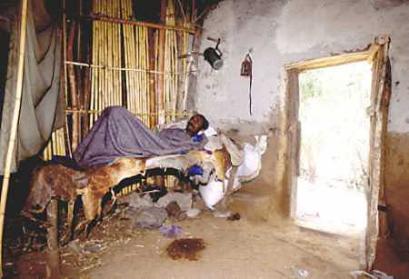The Atomic Energy Agency, which usually deals with the detection of nuclear weapons, uses radioactive radiation to exterminate the malaria mosquito. Every 20 seconds an African child dies from the disease spread by the mosquito

The UN mobilizes nuclear technologies in its war against the mosquito that spreads malaria throughout the African continent. Yesterday, Africa marked Malaria Day, which is designed to focus attention on the scourge that causes the death of millions of citizens every year, most of them children. Malaria causes annual economic damage to the continent of approximately 12 billion dollars in the gross national product.
Bart Knowles, an entomologist at the International Atomic Energy Agency, explains that every year between three and five million cases of malaria infection are reported. It is estimated that every 20 seconds an African child dies of malaria. Most of the deaths occur in isolated areas, whose residents do not receive appropriate medical care. Knowles explains that the UN decided to try to combat the phenomenon by destroying the Anopheles mosquitoes that spread the disease through their bites.
The Atomic Energy Agency is usually involved in monitoring and searching for weapons of mass destruction in countries such as Libya, Iran and Iraq. The agency's personnel had already used the knowledge they possessed to develop a weapon that destroyed the tza tza fly, which originates in Zanzibar and is responsible for spreading the deadly sleeping sickness.
Advertisement The scientists use the "sterile insect" technology, in which the males are exposed to radioactive radiation that sterilizes them. In the second stage, the insects are released into the wild and mate with the females, when the eggs are not fertilized and the species does not reproduce. The purpose of the process is to reduce the malaria mosquito population to extinction, explains Knowles, who himself contracted the disease nine times during the study. The project, costing only nine million dollars, is still in the initial stages.
One of the complexities of the process is finding male mosquitoes strong enough to survive the radiation damage. The ones who actually sting the humans are the females, who get to mate only once during their lifetime, only two weeks old. Already in the 70s, Knowles carried out a similar process that ended up eradicating the malaria mosquitoes from an infected area in El Salvador. He and his friends hope that they will succeed in their mission in Africa as well.
